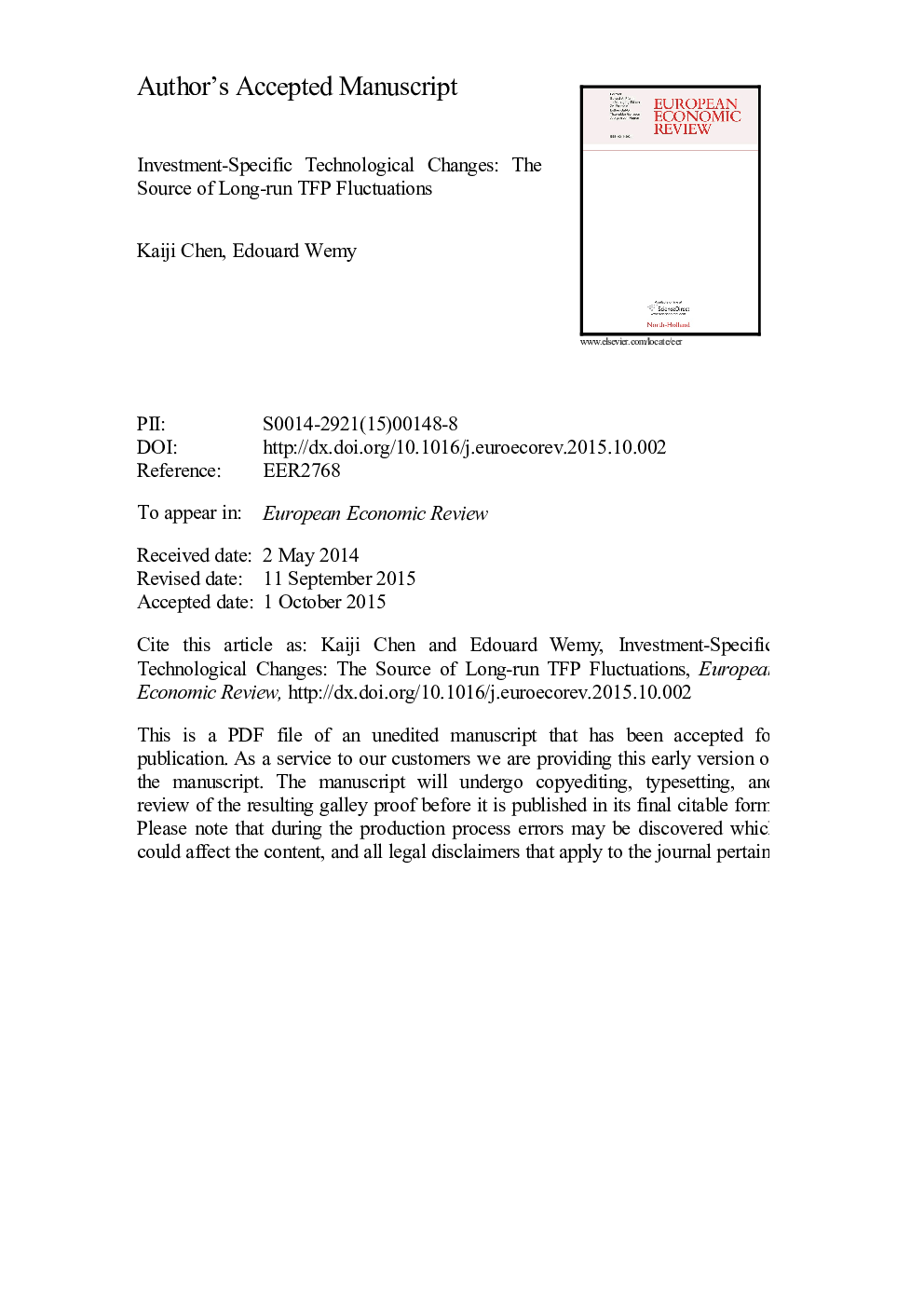| Article ID | Journal | Published Year | Pages | File Type |
|---|---|---|---|---|
| 5066590 | European Economic Review | 2015 | 62 Pages |
Abstract
Technological innovations originating in the capital-producing sector may spillover to the rest of the economy and enhance aggregate TFP in the long-run. This paper assesses the quantitative importance of investment-specific technological changes in long-run movements in aggregate TFP. To this end, we construct a two-sector business cycle model where an IST diffusion process influences long-run movements in aggregate TFP via spillover. We then establish the linkage between the primitive shocks of the model and two shocks that can be identified from a VAR approach: one shock accounting for the long-run movement in aggregate TFP and the other accounting for the long-run movement in the inverse of the relative price of investment. We show analytically that the correlation of these two long-run shocks can be fruitful in distinguishing the quantitative importance of IST innovations in long-run movements in aggregate TFP. Using post-war U.S. data, we find that these two long-run shocks identified by the MFEV approach are almost perfectly collinear. Moreover, these two shocks can explain a significant, and surprisingly similar, fraction of the business-cycle fluctuations in other important macro variables. Our findings suggest that embodied technological changes are an important driver of long-run movements in aggregate TFP.
Keywords
Related Topics
Social Sciences and Humanities
Economics, Econometrics and Finance
Economics and Econometrics
Authors
Kaiji Chen, Edouard Wemy,
